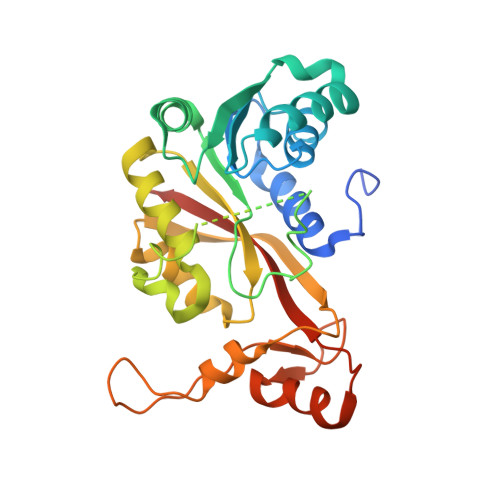Insights into methionine S-methylation in diverse organisms.
Peng, M., Li, C.Y., Chen, X.L., Williams, B.T., Li, K., Gao, Y.N., Wang, P., Wang, N., Gao, C., Zhang, S., Schoelmerich, M.C., Banfield, J.F., Miller, J.B., Le Brun, N.E., Todd, J.D., Zhang, Y.Z.(2022) Nat Commun 13: 2947-2947
- PubMed: 35618717
- DOI: https://doi.org/10.1038/s41467-022-30491-5
- Primary Citation of Related Structures:
7VVV, 7VVW, 7VVX - PubMed Abstract:
Dimethylsulfoniopropionate (DMSP) is an important marine anti-stress compound, with key roles in global nutrient cycling, chemotaxis and, potentially, climate regulation. Recently, diverse marine Actinobacteria, α- and γ-proteobacteria were shown to initiate DMSP synthesis via the methionine (Met) S-methyltransferase enzyme (MmtN), generating S-methyl-Met (SMM). Here we characterize a roseobacterial MmtN, providing structural and mechanistic insights into this DMSP synthesis enzyme. We propose that MmtN uses the proximity and desolvation mechanism for Met S-methylation with two adjacent MmtN monomers comprising the Met binding site. We also identify diverse functional MmtN enzymes in potentially symbiotic archaeal Candidatus Woesearchaeota and Candidate Phyla Radiation (CPR) bacteria, and the animalcule Adineta steineri, not anticipated to produce SMM and/or DMSP. These diverse MmtN enzymes, alongside the larger plant MMT enzyme with an N-terminus homologous to MmtN, likely utilize the same proximity and desolvation mechanism. This study provides important insights into the catalytic mechanism of SMM and/or DMSP production, and proposes roles for these compounds in secondary metabolite production, and SMM cycling in diverse organisms and environments.
Organizational Affiliation:
Frontiers Science Center for Deep Ocean Multispheres and Earth System & College of Marine Life Sciences, Ocean University of China, Qingdao, China.

















